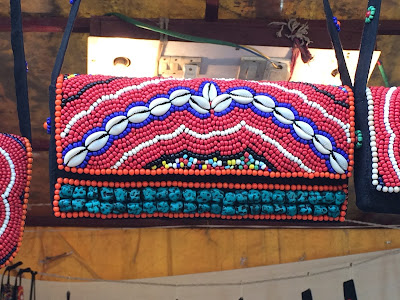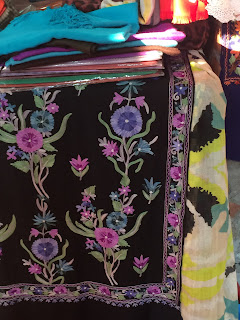Composition and Theme
There are few main motifs that give a unique look to Kashidakari. They have been used since 15th century and only minor improvements and changes have been made. There are motifs like Kalka and Chinar leaf Motif that are abundantly used in Kashidakari.
(Source- Traditional Embroidery of India)
Greater percentage of motifs are picked up from flora and fauna of kashmir. Flowers like lily, lotus, tulip and birds like parrots, kingfisher, parrot etc are the main source of inspiration in Kashidakari.
Primarily, the flower and the bird motif domionate while the slender, delicate stem and creepers mender all over.
It should be noted that animals and humans are not found in kashidakari.
There are different placements of kashidakari on a shawl or outfit amd has different names accordingly.
for eg, cluster of flowers in place is called kunj Butta or buta while the motifs running along the edge of shawl is called hashiya amd the borders on the either side of shawl is called pallu.
(Source- Traditional Embroidery of India?)
There are few main motifs that give a unique look to Kashidakari. They have been used since 15th century and only minor improvements and changes have been made. There are motifs like Kalka and Chinar leaf Motif that are abundantly used in Kashidakari.
(Source- Traditional Embroidery of India)
(Image source- Traditional Embroidery of India)
Primarily, the flower and the bird motif domionate while the slender, delicate stem and creepers mender all over.
It should be noted that animals and humans are not found in kashidakari.
There are different placements of kashidakari on a shawl or outfit amd has different names accordingly.
for eg, cluster of flowers in place is called kunj Butta or buta while the motifs running along the edge of shawl is called hashiya amd the borders on the either side of shawl is called pallu.
(Source- Traditional Embroidery of India?)
Look And Style
To me, Kashidakari is very intricate, very detailed, colourful, very floral and gives a very elegant, heavy and royal look.
There are several national and international fashion designers whose designs have been inspired by kashidakari such as Alexander Mcqueen, Prabal Gurung and Ellie Saab whose deigns are inspired from Kashida.
There are movies such as Kashmir ki Kali and Rockstar which feature actress wearing Kashida Designs.




































